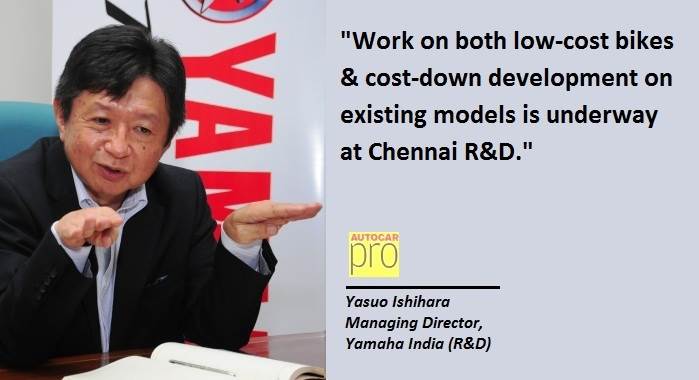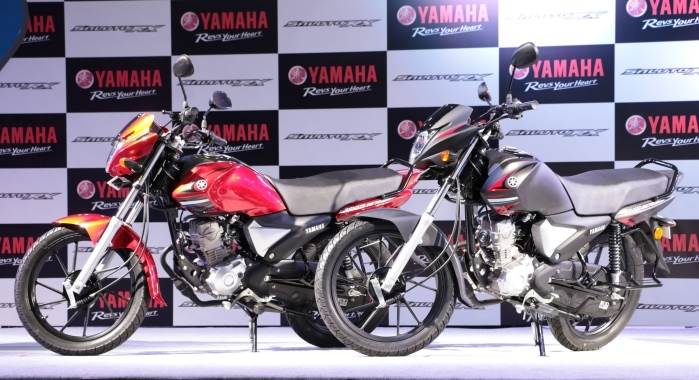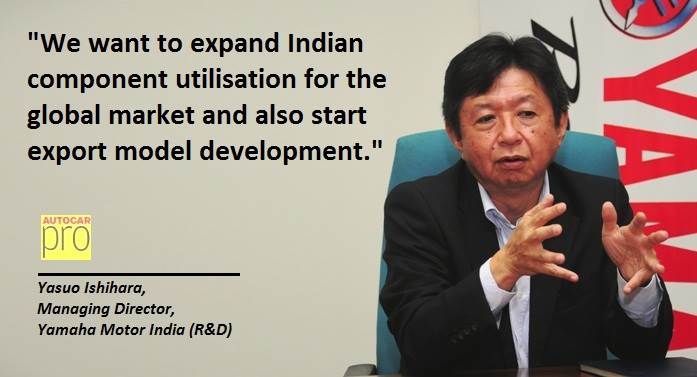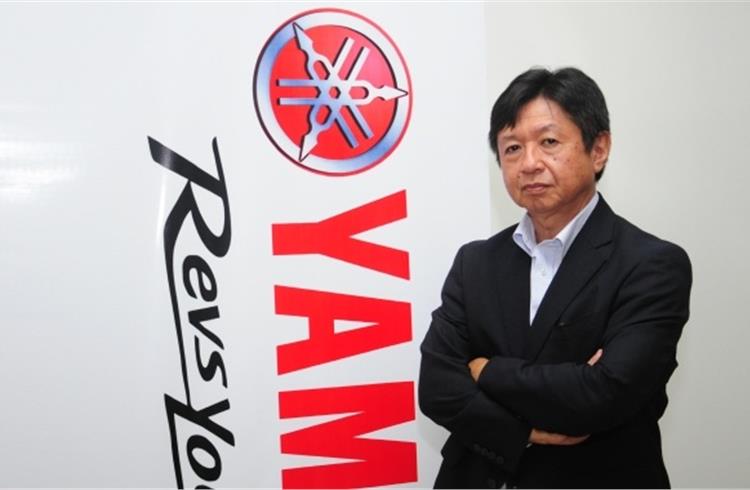‘We want to use our India product innovations globally.’
Yasuo Ishihara, MD of Yamaha Motor R&D India on increasing the collaboration between its facilities in Surajpur and Chennai, the INDRA project, Blue Core technology and low-cost motorcycle development.
Yasuo Ishihara, the managing director of Yamaha Motor Research & Development India on increasing the level of collaboration between its facilities in Surajpur and Chennai, the INDRA project, Blue Core technology and low-cost motorcycle development. An interview by Shobha Mathur.
In July, Yamaha inaugurated its second R&D centre in Chennai. What are the long-term plans for product innovation and research?
Until last year, our R&D was undertaken at Surajpur and we had some limitations in terms of human resources. Thus, we set up a second R&D centre. Our goal though is the same: to undertake affordable motorcycle development. In Chennai, we have some additional facilities including a design centre, test track and do some evaluation work.
We have just begun collaboration between the two R&D centres, which will lead to more output generation for future models. We are now mainly focused on domestic motorcycle development but, together with our HQ (in Japan), we want to expand Indian component utilisation for the global market. The next step will be to start export model development. We have already started to export some models to African countries and Latin America; we also export the components to other countries.
Our long-term vision will see us expand more and more as Indian motorcycles and their components are very affordable compared to other countries, which means they can be utilised for other markets as well.
How would you define an affordable motorcycle?
A few years ago, we announced the Innovative and New Development based on Responsible Analysis (INDRA) concept under which the Saluto RX was launched earlier this year. I don’t want to say that cheap is better. We want to improve the value of the bike, as well as improve cost and function balance.
If a product is very cheap but very easy to break, then its value is very low. But our product must not be like that. So even if our model price is not minimum, we believe our product is very competitive.
How many products will follow from Project INDRA?
The INDRA concept is not only for one affordable model but a very big project for total development and we have deployed it from the Saluto RX to other new models, which we will launch later.
Collaboration between our R&D centre in Chennai and Surajpur and our global HQ is necessary. We manufacture motorcycles in Surajpur and Chennai and have development engineers there. We need to be cross-manufacturing in a place because design cannot be done only on a table. Drawings cannot be made without actual parts and motorcycle investigation, so all the development engineers must be cross-functional.
The Chennai and Surajpur R&D centres have 40 engineers each. We have started purchase and development functions too, so in all we have more than 250 engineers.
What product innovations is the Chennai R&D centre currently working on?
Low-cost motorcycle development is currently underway at the Chennai R&D centre as well as cost-down development for existing models. The INDRA project focuses on developing optimised specifications for the market in terms of what the customer really wants in value and cost. We try to optimise specs, thereby lowering cost.

The Saluto RX is one solution. If we want, we can cut the price further but value must be maintained. We want to grow in the next 3-5 years and use our development work and product innovations globally. But our first focus remains the domestic market.
How much more can you cut costs compared to the Saluto RX and still maintain value? How closely is Yamaha working with suppliers for it?
We still have room to go 20 percent down in terms of costs but we need to be very careful in terms of customer satisfaction. Value equals functions and cost balance. Sometimes, the customer does not find out what is new in a two-wheeler but the model is much more localised compared to its predecessor. Some modifications in existing models can help lower costs.
In terms of lightweighting, we need to look at the customer and what function he does not want and cut that out. We always take care of our customers’ reaction, based on which we make a hypothesis. We then design the product and again conduct research as to whether it will be acceptable to the customer. We optimise specifications for the market after receiving the feedback.
It is too early to comment on the feedback for the Saluto RX as we have received only good comments as regards the comfortable riding and handling and good fuel economy. It takes a long time to get some complaints.
To improve fuel economy and mileage, Yamaha had introduced its Blue Core technology. Is there anything new coming up?
Blue Core technology is a philosophy and not only a technology. Improvement of combustion efficiency and weight reduction are among the many parameters that make up Blue Core technology and we are continuing with this philosophy for new engine development. This concept is not only for India but also for other countries where it is used for motorcycles and scooters.
Currently, in India, our engine is based on the carburettor system but with BS-VI emission norms coming into force from 2020, we will use a new intake system, maybe the fuel injection system, to cut emissions. We will design the new fuel injection system based on Blue Core technology.
Has work begun on the new fuel injection system for meeting BS-VI emissions?
We have already started because Yamaha is a global company. In other countries, we have already met various stages of emission norms and there are many advanced regulations for which engines have been developed. We can utilise those engines for the Indian market.

Recommended: Saluto RX first model under India Yamaha’s Project INDRA
The optimisation work has started. I cannot reveal the displacement capacity but optimisation of the engines to meet the requirements of the Indian market is very hard work for Yamaha Motor R&D India.
Can you elaborate on the type of work that will be involved in customising the engines for the Indian market?
It will revolve around mainly intake control and exhaust catalysation. BS-VI emission norms will necessitate very small exhaust gas flow. Intake control is very important because even if exhaust gases are clean, it is still not good enough for meeting BS-VI emission norms. This will require diagnostics as after long usage, the two-wheeler system wears out worsening the exhaust gas outflow.
We need to check this long-time use as a result of which adoption of some sensor technology and analysation programme can give an indication to the rider about which component is causing a problem while riding, similar as in a car.
How does the fuel injection system improve rideability, fuel economy and mileage?
Generally speaking, a fuel injection system can control intake, so it leads to various benefits. Basically it depends on the engine concept and what you want to concentrate upon. For instance, if you want to focus on fuel efficiency, we can utilise this system to improve fuel economy. But if it has to focus on performance, we can shift this technology and control engine performance as this technology can control various functions. This control is much easier than managing the carburettor system.
Currently, meeting stringent emission standards to protect the environment is most important. Secondly, model by model requirements are different – in the commuter segment, fuel efficiency is the first priority but in a sporty model, performance is the first priority.

Since we have already started all work for it, maybe it will take a year for development. BS-VI emission norms are similar to what is required in European countries. So some Yamaha models launched in the European markets will need some development resource from India.
Country-wise, there are different regulations. In India we are at BS-IV and the intake system is the affordable carburettor system across our models except for the FZ, R15 and R3 motorcycles. But if we export the Indian models to other countries, the regulations are more advanced there for the same motorcycle especially in Europe, America and Japan. So we need to change the emission system for each country and that is a big headache for us. If all the countries follow the same regulations, only one platform will be necessary for one segment.
So that means you are already adopting the fuel injection system for your motorcycle exports?
We have both the carburettor system and the fuel injection system for exports. But the engineering cost of the carburettor system and the fuel injection system is different with the fuel injection system costing higher than the carburettor system. So, if some country follows a low level of emissions, it requires a cheaper-spec carburettor system. Other markets, where emission regulations are more stringent, will require the fuel injection system. So, accordingly, our product and the valuation needs to be changed.
Yes, we are fine-tuning the system in India for which we cooperate with Yamaha operations in other countries. We need to understand the requirements of those markets and get the information from there. For very high technology areas, we also need support from our headquarters. Yamaha Motor R&D India is not independent but cooperates globally.
Are you working closely with suppliers for the fuel injection system?
We have partnerships with our suppliers in some component areas for co-development and begin talks with them from the start. We always request 100 percent localisation but, due to many reasons, only some parts can be localised at the start time. A few years later, suppliers may localise some more components. So indigenisation is a step-by-step process.
Of course, we talk to our suppliers but we need to respect their actions. The final part cost is important to us but sometimes the localised component is more expensive than the imported unit, which means it is better to import it.
What are the latest trends and upcoming technologies in two-wheelers?
In India, the anti-lock braking system, BS-VI emission norms and fuel injection systems in two-wheelers are the upcoming trends. Combination braking is already present in the market while ABS and BS-VI will be implemented in Indian models over the next 3-5 years.
This interview was first published in Autocar Professional's September 1, 2016 NCR Special issue.
RELATED ARTICLES
Setrans Mobility Booster Charging top-up 25% EV range in 15 minutes
Two enterprising tech-savvy entrepreneurs Rana Roshan Singh and Vivek Ummat of Noida, Uttar Pradesh-based start-up Setra...
'Our products are proudly 100% designed and made in India'
Creatara Mobility, a New Delhi based electric two-wheeler startup, claims to have tackled various challenges in making i...
'EVs have been around for a much smaller time than ICE, so best practices are still evolving'
EV OEMs and start-ups are under pressure to reduce production costs and bring them close to ICE counterparts. Vaibhav Ku...





 By Shobha Mathur
By Shobha Mathur
 20 Sep 2016
20 Sep 2016
 6443 Views
6443 Views









